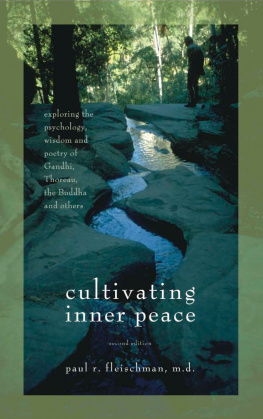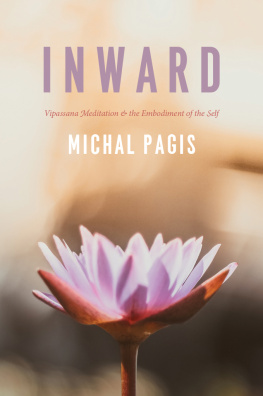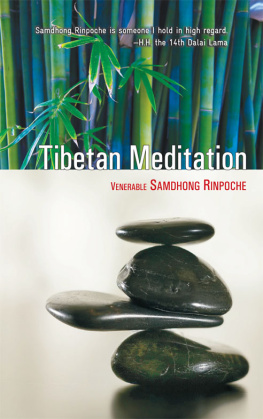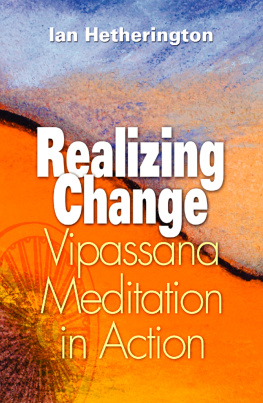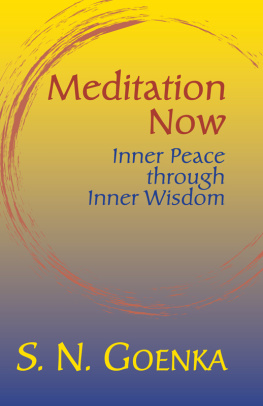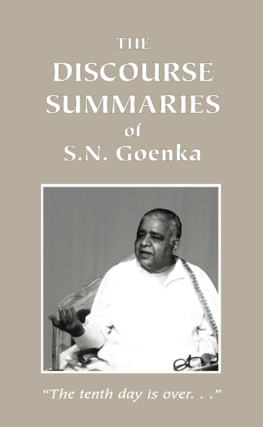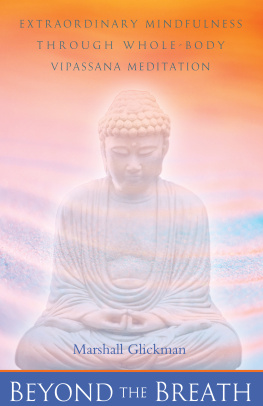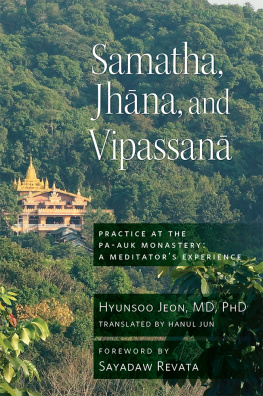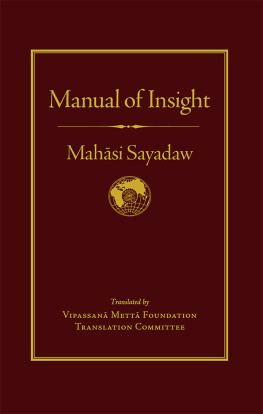A Way of Life
An Address to the Harvard Medical School
Department of Continuing Education
Boston, Massachusetts
June 1 2, 2007
When meditation first crossed the boundaries of Asia and began to have a significant impact upon the Western world thirty to forty years ago, most of the people who were transporters of this cultural exchange were young adults, who were seeking something new that would help to transform themselves and the culture they had been left with. In the 1960s and 70s, World War II and Vietnam still were casting a long shadow over daily life. In the mid 1990s, twenty-five years along into this flowering of cultural exchange, there was a cartoon in the New Yorker magazine showing a guru sitting in solitude surrounded by Himalayan peaks. There are huge, cartoonishly sharp mountains behind him. The guru is lean and bony, clearly not dining on McBurgers, and dressed only in a loincloth, and with very long hair and a beard trailing below his navel onto the ground. Climbing up towards him, clambering upward by his fingertips, is another cartoon character you could describe as an aging hippy. He has long hair pulled back in a ponytail, but the top of this head is bald and he has gray hair. He has a very beaten up old backpack that was first seen in Katmandu in 1971. The guru looks down on the aging hippy scrambling up towards him, and says: Frankly, I was hoping to attract a younger audience.
That does not pertain today. I am glad to see an audience peppered with gray hair. One of the signs that meditation has taken root in the West is that it is no longer confined to any social, cultural, or generational pocket. People of any age, of any ethnicity, or of any background have found it acceptable and are interested in it.
I would like to begin talking about meditation as a way of life by making it clear that meditation is not a treatment. Of course there are some interrelationships with psychotherapeutic treatments that I will address later. But meditation is a bigger and broader activity than the professional treatment of illness and dysfunction.
Here in Massachusetts we ought to start by paying deference to Henry David Thoreau. This glittering high-rise hotel in which we are meeting today is only a handful of miles from the small town and woodlots and little rivers and ponds he made sacrosanct in and around Concord. Thoreau was one of the first Americans to gain access to the Asian texts, both Hindu and Buddhist, which were coming out of the British Empire in the early part of the Nineteenth Century. Most Americans were unaware of these books and the ideas they contained, but Thoreau was well networked to a few English intellectuals, who shipped these translations across the Atlantic to him. We typically read Walden in high school as the quintessentially American experience of nature and wilderness in the New World. In fact, Thoreau explicitly says he was attempting to reproduce what he imagined to bebased upon his readingthe methods of Indian lifestyle meditators. If you re-read Walden carefully you will see that he repeatedly praises Asian literature and the culture that produced it, as exemplary of the contemplative life. He created the sojourn at Walden Pond in order to partake of the Asian experience of a meditative lifestyle. He said that only from his days in solitude near Walden Pond did he come to realize what the Orientals mean by contemplation that due to his own artesian experiences the water of Walden had now mingled with the Ganges, and that the visions within Indian texts exceeded and improved the constricted concepts of the West. Thoreau says in the chapter, Where I Lived and What I Lived For, I went to the woods to live deliberately, to front only the essential facts of life, and see if I could not learn what it had to teach, and not, when I came to die, discover that I had not lived . and be able to give a full account of it in my next excursion. Without even bothering to justify or elaborate that famous comment, Thoreau poked his walking stick through the fabric of Western thought, and affiliated himself with the Indian tradition of invoking rebirth as an inspiration for living well in this birth. Was he just being playful or ironic?
Inspired by people like Thoreau, about thirty-five years ago I returned to India, which I had originally visited as a medical student. I returned to find, study, and practice meditation. At that time I began a meditation practice, which I continue to this day, called Vipassana meditation. My teacher at that time and still today is Mr. S. N. Goenka. The word Vipassana is a Pli word, which has now become incorporated into English. Pli is a language of ancient India, a spoken colloquial form of Sanskrit. Sanskrit was the classic literary language, which retained its literary position but eventually disappeared from spoken usage. Pli was a spoken street language and Vipassana was preserved in what was then an accessible tongue. Vipassana means, seeing realistically. So Vipassana meditation was differentiated from the other forms of meditation that were common 2,500 years ago in India by the fact that it was supposed to be approachable by the common man and to be entirely realistic. It was not supposed to be in the possession of any ethnic or political group, nor to require priests or professional expertise to be put into practice. It had no religious, philosophical or ideological trappings. It was a realistic meditation for the ordinary person.
I took my first ten-day Vipassana course in India in 1974, and the exact same course that I took then is available today at the Vipassana Meditation Center in Shelburne Falls, Massachusetts. I would like to describe to you how Vipassana is taught today and how this teaching is linked to its ancient roots. Vipassana is taught as a path, that is to say as a lifestyle, or way of life. Maybe in psychiatric terminology you could say, a lifestyle intervention. It has the atmosphere you find in Thoreaus writing, in which life is focused on appreciation, intensity and activity.
I emphasize the word, activity because to some extent, as meditation entered the Western world, those of its pioneering early students who were mental health professionals kept their meditation practice somewhat closeted. Their caution to reveal that they were meditatorsparticularly if they were psychiatrists, psychologists, or other psychotherapistswas realistic prudence. Meditation had been stereotyped in the West as a mildly contemptible form of escapism and passivity. I know that these stereotypes actually existed and were not just figments of the imaginations of the early generation of Western meditatorsbecause I myself held them. Meditation was loaded down with a lot of negative baggage. Freudians would tell you that it was merely seeking an oceanic experience, which was a regressive wish to fuse with the memory of the mother. Activists said it was self-satisfaction and reneging on the obligation to improve society. Cynics pointed out how silly and shallow it seemed to them that the Beatles or Mia Farrow purchased meditation like a new marketing strategy for their images. Meditation was seen as a gimmicky product of shyster gurus. People who meditate were said to just sit around staring at their navels. So, like many others, I was leery and skeptical along with being intrigued. I was quite ambivalent. I wanted to learn about meditation but I didnt want to become an ineffectual person. After World War II and the Holocaust, who could imagine a merely passive and sedative life as being either ethical or survivable? I wanted peace and harmony, but not at the expense of competence or of vivid and responsible living.
Our Nineteenth Century Massachusetts exemplar, Thoreau, was a Harvard graduate, a surveyor, a manufacturer, a businessman, a teacher, as well as a writer. So I emphasize the word, activity in order to show that my original concern about being duped or psychologically lobotomized, which was and maybe is shared by many other people, is 180 degrees wrong. If we think of Thoreau as a local founder of meditation as a way of life, we should be reminded of the appreciation with which he experienced every moment, the vigor and hardiness of his outdoor existence, and the intensity with which he engaged social and political responsibilities. When he died, Thoreau was more eulogized as an abolitionist, a fan of John Browns courage and commitment to end slavery, an antagonist to the politics of compromise, and a conductor on the Underground Railway, than he was as a literary figure.


